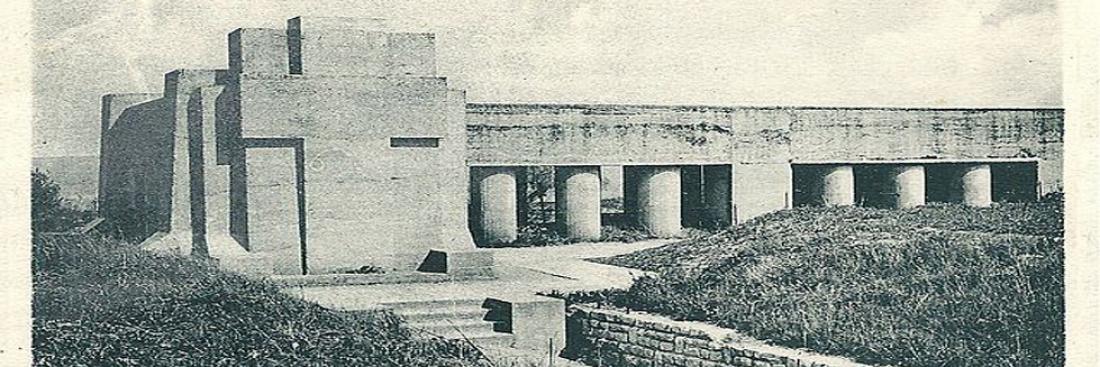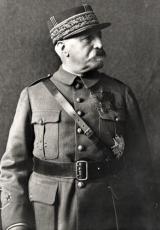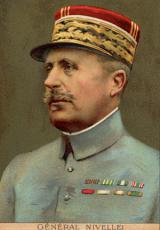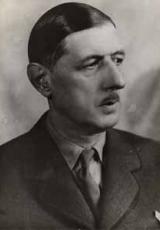Verdun : les évolutions de la mémoire d'une bataille symbolique

Corps 1
Verdun: developments in remembrance of a symbolic battle Certain names have the power to sum up a war all by themselves. Verdun is one such name. It conjures up the willpower and courage of all soldiers. It conjures up the mud and the rats in all the trenches and the deafening racket made by all the machine guns. It conjures up all the mutilated bodies and the dead. The memory of this battle speaks of all others. It has also evolved over time.
Corps 2
The battle of Verdun occupies a unique place in national history. At the time, it was a paradoxical battle of the Great War. Chests endured the "storms of steel" (1) of the artillery in a landscape that was atypical for the war, where trenches had been flattened by the power of the fire. The battle was felt to be a symbol of the aggression carried out on all national soil. But at the same time soldiers' morale was starting to flag, even though the military situation was starting to improve. The 1914-1918 war was not the "war to end wars"; the States involved continued to confront one another and the rifts that followed had an impact on remembrance issues which today, as the last of the soldiers die, are experiencing new changes. At the end of the war, it was on Verdun that national remembrance first focussed. Because of the system of rotation, a considerable number of French units were thrown into the fiery furnace. Because of its duration - more than 300 days, not counting the battles of 1917 - the battle left its mark on French memories. The rear echelon played an important role at Verdun. Every day The Sacred Way between Bar-le-Duc and Verdun carried thousands of vehicles transporting 2,500 tonnes of supplies, 2,000 tonnes of ammunition and 20,000 men. The units using the "lungs of Verdun" are therefore also remembered for the aid they provided. Just about every family had to cope with grief or the wounds of one of its members. However, Pétain's " We'll get them" was still resounding loud and clear in the country.
At the end of the war, the men devoted themselves to making Verdun a vital landmark memorial for the whole nation. The archbishop of Verdun, Mgr Ginisty, was one of them, to whom the ossuary in Douaumont owes a great deal. A remembrance "tourism" (pilgrimages to the battlefields and graves) grew up spontaneously in the years that followed the end of the war, but dropped off again quite quickly. However, the first large official demonstrations were a relevant area of study for understanding the sense and scope of the commemorations. It is interesting, for example, to concentrate in particular on the decennial commemorations.
1926 was a major one: it was held in the presence of the surviving great leaders of the war and set out the commemorative ritual which was not to vary much afterwards. In 1936, the commemoration suffered, due to the political context. Franco-French conflicts when the Popular Front came to power divided the world of ex-servicemen. The ruling Hitlerists used the commemoration to turn German ex-servicemen into vehicles for pacifist propaganda whose echoes spread to their French counterparts. Remembrance of the battle was considerably unsettled in 1946. Marshal Pétain's stars had been tarnished by the policy of collaboration he had followed during the Second World War and discussing his place and role in the battle of 1916 had become a delicate subject. In 1956, the war in Algeria - although then described as an operation to maintain order - generated a problem: France could not celebrate the battle of Verdun without taking into account what was happening on the other side of the Mediterranean. 1966 marked a breakdown of more than one kind. Various elements combined to revive its commemoration: a fiftieth anniversary always takes on a special splendour; the French community was somewhat appeased; General de Gaulle, then President of the Republic, had himself fought at Verdun and shared many of the servicemen's values and there were still many survivors of the battle, which gave strong emotional weight to the ceremonies. Incidentally, it was at this time that the idea was born for the Verdun Memorial, supported by Maurice Genevoix and some others.
Verdun, "the world capital of peace" Opened in 1967, it bears witness to the suffering endured by French, German and American soldiers in the Verdun sector. It was also in 1966 that the theme of Franco-German reconciliation and peace was introduced, which was taken up by de Gaulle in 1967 and is still today the principal guideline of the World Centre for Peace. The commemoration of 1976 was not of such great importance. With Valery Giscard d'Estaing a new generation of political men emerged, who had not experienced the fighting of the Great War. They tended to put the emphasis more on the Second World War, although for those who had preceded them the 1914-1918 war still represented the major reference for remembrance. In addition, eyewitnesses began to become scarcer and the weight of ex-servicemen from the Great War significantly diminished. In 1986, the ceremony did not have the same feel as a normal decennial commemoration. Indeed, two years earlier, on the 22nd September 1984, the ceremony where François Mitterrand and Helmut Kohl paid tribute, hand in hand, to those who died at Verdun, had "made" the event. This historic moment also showed that the President of the Republic understood the remembrance issues in a global context, by linking the Great War with the Second World War. Indeed, it was in some way a response to the refusal of the Americans to see the Germans take part in the celebrations of the 40th anniversary of the Normandy landings in June 1984. By definition, remembrance lies in the domain of the sensitive and not the rational. Its role in sacralisation can sometimes disturb historians, especially when there is a clash between increasingly community-based memorials.
Historians themselves have set out to explain what the event meant, not in the light of current thinking, but with regard to that of the time it took place. Today, the national memory of Verdun has changed. The disappearance of the last soldiers has taken the Great War out of the "present time". A shift of memory is taking place before our very eyes. It is now refocusing on several reference points in family and collective memories. In the last twenty years, the contents of textbooks have changed. The space given to the description of the battle of Verdun has diminished, with the battle of the Somme benefiting from a re-evaluation that owes something to current intellectual trends and the fact that it seems more European and therefore more symbolic than that of Verdun, judged in some quarters perhaps to be too "Franco-French". Through textbooks, the history taught in schools contributes to the construction of a collective memory.
The transmission of knowledge (the dates and pace of the battle and the importance of the key-players, both famous and anonymous) is also accompanied by teaching methods based on interactivity and pupils' personal research. An example of this is the association of pupils and students with the memorial ceremonies. It is a way of completing the work of historians from a different perspective. On condition, however, that any "memory" does not take precedence over history and knowledge of the events.
It is through learning what the hell of these three hundred days and three hundred nights of battle in 1916 was actually like that Verdun can today lay claim to the title of "world capital for peace". For that, teachers must, to a large extent, complement the contents of the textbooks with accurate knowledge. A recent conference (2) has just reiterated that the battle of Verdun had serious repercussions in a large number of countries at the time it happened. It also showed that the memory of this battle took on various forms, some of which have disappeared, whilst others have changed. Of the "tourism" of the battlefields in the 1920's, there remains today a form revitalised by the concept of the "Paths of Memory", which the management of the Ministry of Defence's remembrance, heritage and archives service has made one of the focal points of its approach, in particular through its internet site (3). The memory of the battle that was taking shape in 2006 from the contents of school textbooks was no longer the same as that of 1986. It put greater emphasis on the suffering shared by German and French soldiers. German textbooks increasingly "got rid" of the Kohl-Mitterrand ceremony of 1984, not because it no longer meant anything, but on the contrary, because it is now accepted as the norm. Future commemorations will not have the same profile as those that have previously taken place.
In addition, French society today is more attracted to its family and personal memory than to an "institutional" memory. Our contemporaries want to know where their great grandfathers fought, where they died. The enormous success of the website "mémoire des hommes" (the memory of men) (4) is great proof of this. This social demand for a private interpretation of the battle of Verdun is to be taken into account when constructing a memory for future generations. It is without doubt by continuing to work in this way that commemoration of the battle will still have meaning in the long term.
Notes : (1) Ernst Jünger, Orages d'acier (Storms of steel), 1920 (2) 1916-2006: Verdun sous le regard du monde, (Verdun in the eyes of the world) edited by François Cochet. 23rd and 24th February 2006. The minutes of this international conference will be published by 14-18 Éditions (Soteca, 48 /50 boulevard Senard, 92210 Saint-Cloud and distribution by Belin in the autumn). (3) www.cheminsdememoire.gouv.fr (4) www.memoiredeshommes.sga.defense.gouv.fr




